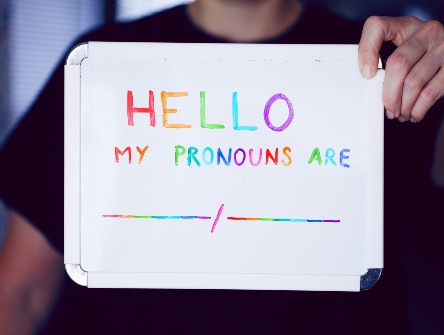#MeToo: The return of the victim?
The term ‘survivor’ has been wholeheartedly embraced in contemporary feminism. But is it always appropriate?

Contemporary feminists have made some important critiques of the mainstream feminist movement of the 1970s and 80s that is often referred to as the second wave – among them the generalization of women’s experience that does not reflect the experiences of racialized and poor women, and relatedly, the ongoing discrediting of unconventional women in criminal justice responses to sexual assault. Yet there remain some striking similarities to earlier feminisms in public and activist discourse around sexual harassment and assault. For example the emotionally arresting image of the woman victim of sexual violence – strategically mobilized by feminists campaigning to change sexual assault laws in the 1970s – is one we continue to see today on textbook covers and in awareness campaigns by anti-violence organizations: she is visibly bruised, filled with terror, alone, and often conventionally attractive and white – a decontextualized, ideal woman victim. And while feminists in the 1970s spread awareness about and shared their experiences of sexual assault through consciousness raising groups, the #MeToo movement can be seen as a similar contemporary feminist project. Perhaps in most ways except its dissemination through online social media, the #MeToo movement resembles consciousness raising insofar as it aims to highlight the prevalence of sexual violence.
As part of this, the #MeToo movement invites first-person accounts to amplify the voices of survivors. Presented as an improvement on the term ‘victim’ and an important recognition of having gotten over a hardship, the term ‘survivor’ has been wholeheartedly embraced in contemporary feminism. Although it is meant to emphasize resilience and suggest that sexual assault is something that can be gotten over, I question whether its application in the #MeToo movement and other activist and support contexts is, in practice, any different in meaning than ‘victim’. The word survivor is of course important to people in their own sense-making processes but, like victim, it remains a basis on which to claim sympathy and recognition that renders the (self-)labeled an object of pity – a master status that eclipses all other aspects of a person’s identity. The preference for this term, and the meanings it suggests, may also exclude or render those who have been sexually victimized but do not wish to identify with this experience vulnerable to criticism as irresponsible feminist or political subjects.
From this perspective #MeToo can be seen as a symptom of what David Garland has called the return of the victim, a cultural turn in which “the interests and feelings of victims… are now routinely invoked in support of measures of punitive segregation” (2001: 11). We have seen this in the proliferation of pseudo-criminal justice responses to sexual violence on university campuses that erode the due process rights of accused persons in attempting to centre survivors at the same time as they allocate far more emphasis and resources on responses than prevention. As a professor teaching on the subject of sexual violence, I remember being consulted by a student group whose contribution to the institution’s consultation process called for stronger measures to compel accused who were no longer students to participate in the process (notably in focusing on punitive sanctions they had neglected to consider that this fell far outside of the university’s enforcement capacity). Thus, in some respects student activism echoes the #MeToo movement’s tendency to call out, shame, and call for punitive consequences for individual men. However, after a few years of seeing these policies in action, students’ responses may have become less punitive: I was somewhat surprised to see some students agreeing with my request for more actionable restorative justice options in the sexual violence policy review process at my current institution.
The latter example speaks to the reflection and discourse that #MeToo has generated. On one hand, it has been a reminder of feminism’s dark regulatory underbelly – yet another instance in which legal responses are proffered as a solution to an issue rooted in intersecting social inequalities. But on the other hand, #MeToo has generated self-reflection amongst men, and a growing critique of conventional responses. Although it is easy to assume that Twitter is an effective awareness raising platform, I became aware of the former when a male friend told me that even as a bisexual man, #MeToo had made him wonder if some of the encounters he had had with women in his twenties were entirely consensual. Fueled by this self-reflection he disagreed with my suspicions about consent-based education as the preferred prevention tool for university students – the basis of my ongoing qualitative study of how students mobilize what they have been taught through university prevention efforts in their sex lives, and through which I have begun to see the continuing effects of conventional sexual scripts on even young adults’ expectations of sexual interactions. These preliminary findings relate to both of our reactions to #MeToo: reflecting my discomfort with the emphasis on victims/survivors and its perpetuation of women as sexual objects to be acted upon, young women still expect men to make the first move; but aligning with my friend’s unsettling second look at some of his past encounters, young men appear to be increasingly concerned about consent, though as with their women counterparts communicating their desires remains awkward.
Amidst the private and public debates about sexual violence and consent occasioned by #MeToo, a 2018 study by the Canadian Women’s Foundation found that Canadians’ understanding of consent has slightly declined since 2015 – 28% of survey respondents reported they fully understood what it means to give consent in 2018 as compared to 33% in 2015. Though counterintuitive this may be a sign of reflexivity occasioned by public discourse surrounding accounts like that of the woman who felt pressured by American actor Aziz Ansari to engage in sexual activities, similar to the fictional young woman’s narration of what was overwhelmingly publicly interpreted as an exploitative sexual encounter in the short story Cat Person. In both accounts, the encounter was neither clearly violent nor clearly non-consensual, but the women certainly did not participate enthusiastically. The women's limited sexual agency and capacity for expression in each situation, and also the public response calls to mind critiques by dissident, sex positive feminists in the 1980s that we would do well to remember in the contemporary context of #MeToo: as Carol Vance eloquently argued, focusing exclusively on danger invisibilizes women’s sexual pleasure, “overstates danger until it monopolizes the entire frame, [and] positions women solely as victims” (1993: 290). In other words, now that another generation of feminists have exerted considerable energy publicizing the message that sexual violence is prevalent, perhaps it is time to move on from sexual danger to ask, what strategies can we undertake to equip women to be sexual agents and men to respect them as such?


